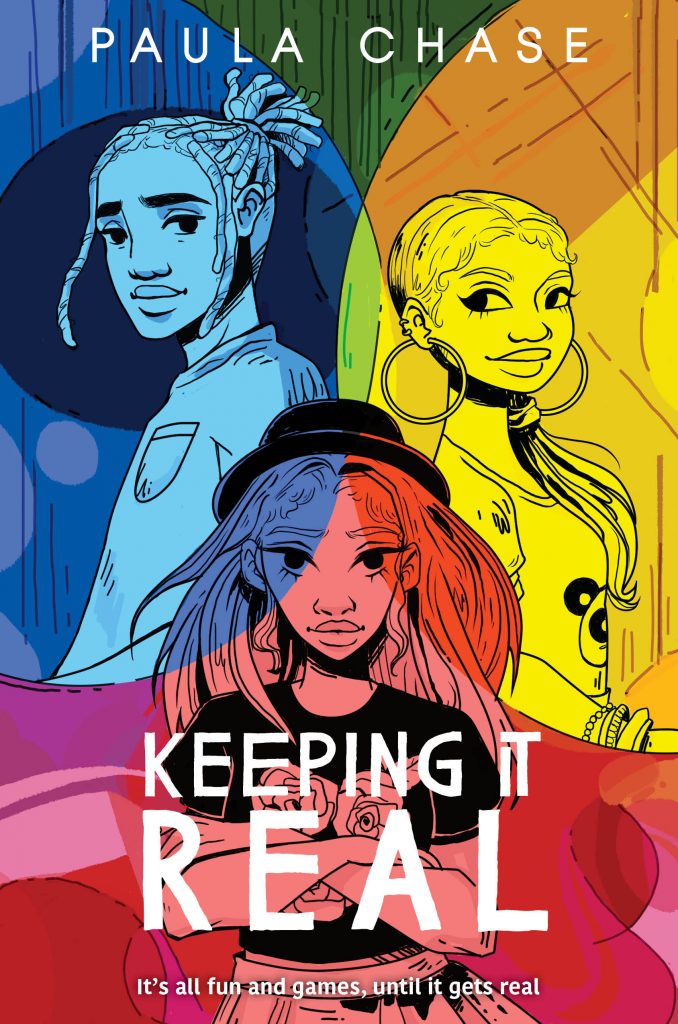This is what happens when you plan to do something and then don’t. You can’t have a cover reveal because someone puts it on Twitter before you can. So, here we are having a cover celebration instead. And I’m not mad!
It’s a good problem to have when teachers, librarians and reviewers of your books are so excited that they share when it’s available. Shout out to Gabi Morataya for announcing that my latest book, Keeping It Real, is now available on NetGalley. And (hint hint) available to pre-order from your local indie.
This cover is the MOST. Joelle Murray did her absolute thing with it. She’s been the cover artist since So Done and her work has made my books so crave-able. But, this one? It made me have serious regrets that Keeping It Real wasn’t a graphic novel. That artwork deserves it. And the story is ripe for it because the characters are doing a summer trainee program with a Hip Hop media company as Jr. Jr. stylists.

In celebration of this cover, here are 5 things you should know about Keeping It Real
- The original title was Daddy’s Girl. This is the second book in a row where the original title didn’t stick because there was already another book in the pipeline with that title. Both times the alternative title worked out better! If you recall, Turning Point was originally called Good Girls.
- For my lovelies who find they must justify to someone why students should read books with Hip Hop oriented titles and brightly colored covers, the characters grapple with:
- Classism
- Racist undertones of scholarships at private schools
- Being “too Black” at school and not Black “enough” in the community
- The concept of keeping it real is a lifestyle. In polite society where watching every word has become an Olympic sport, teens today are hungrier than ever for adults to be straight with them. To be honest and allow them to process that honesty the way they need to. Without that honesty, in the book, our characters find themselves entangled by matters they have no control over, yet are forced to contend with the consequences.
- This book truly straddles Upper MG and Young Young Adult. The story takes place the summer before they all enter the 9th grade. So they’re 13 and 14 year olds – literally the ages covered by UMG and YA. But where will I shelve it? You ask. I suggest a front facing display focused on the juicy drama managed in my classic style of insider peek into the world of teens.
- This is the first time that my character is from an upper middle class background. Solid middle class and working class have been my playground since So Not The Drama. While Black socialites definitely exist, Marigold is steeped in the Black experience that’s more familiar to me – one where the success of her parents is balanced by how and where they were raised. By income, her family are members of an elite wealthy circle. But not by upbringing. This plays a big part in their parenting and in Marigold’s very identity.
Bonus Bit
Readers of my work know that I love creating worlds that are loosely based on real places. District City is my nod to a heavily re-imagined Washington, DC.
